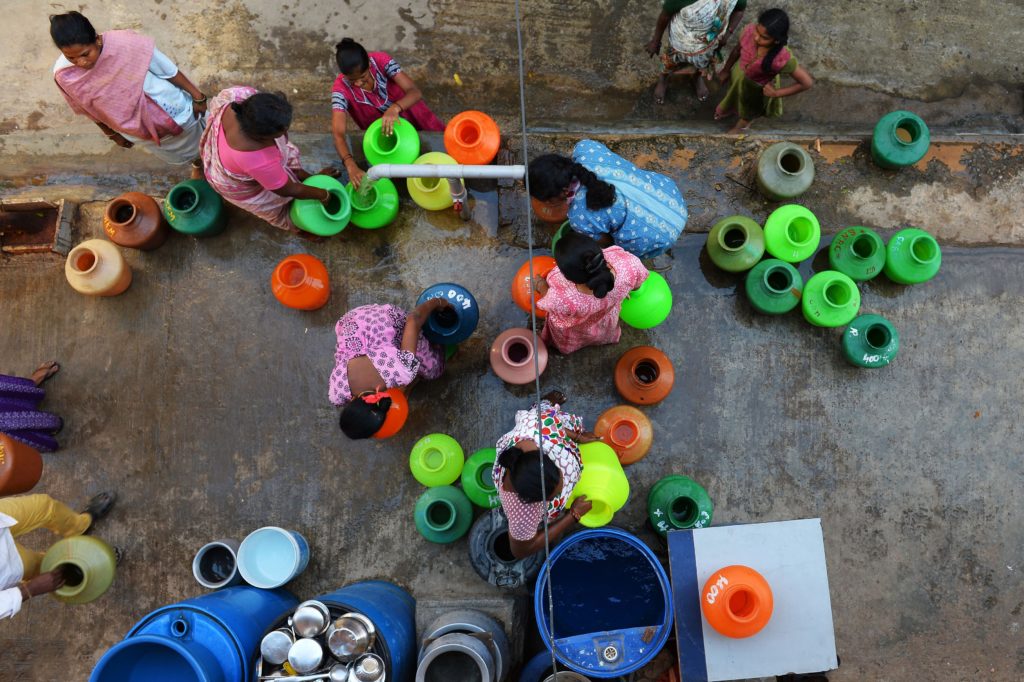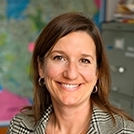Three times a week, Mrs. B—the name given by researchers to a woman in Hyderabad, India—begins her day with a 10-minute, barefoot walk to her neighbor’s gated home to fill her steel pot with water. She balances the heavy pot, which weighs about 30 pounds, on her shoulder for the journey back to her informal settlement.
“I have to do all the work by myself, and during summer we need more water because it is scorching weather,” Mrs. B, said. “I get exhausted and thirsty fetching water all the time. However, if I do not fetch water, then we do not have water to drink.”
Hers is one among a sea of other women’s stories in the struggle for water security. As the hurdles of climate change continue to worsen, women all over the world just like Mrs. B are being forced to find solutions to care for themselves and their families.
The United Nations found that water scarcity already affects every continent and that climate change is causing greater challenges to water access. Overcoming these challenges, and the consequences they cause, often falls disproportionately on women. Because of the societal burden of water collection, women are disadvantaged in terms of nutrition and food security, disease risks, reproductive health, personal safety, and access to education.
As the global community works to address the consequences of climate change, understanding the way gender intersects with water insecurity will be key to their success.
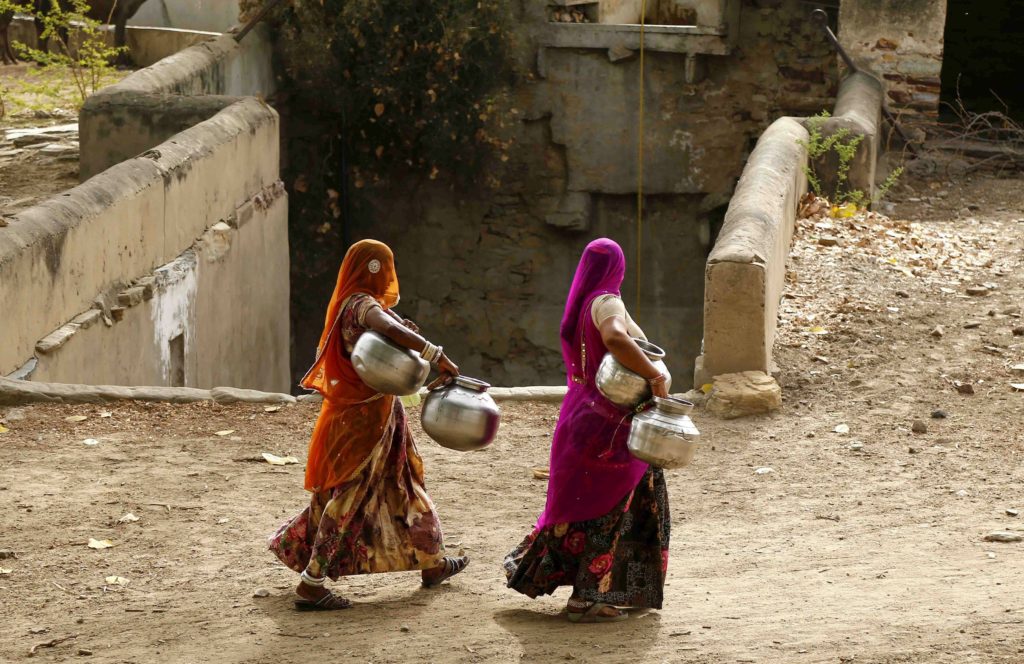
How Does Climate Change Affect Water Insecurity?
Climate change is taking existing problems and making them worse—including water insecurity. According to a 2016 World Bank report, almost a quarter of the human population deals with water scarcity. However, in just two decades, that number could double from 1.6 billion people to 3.2 billion. Climate change is a significant driver of this alarming trend.
South Africa’s capital of Cape Town experienced a water crisis starting in 2017. Climate change caused a severe drought which left the city of 4 million people without reliable access to water.
In some places, such as Mumbai, climate change results in heavier rains and flooding. But in dry places, such as regions of sub-Saharan Africa and India, drought is already common. Climate change intensifies these events outside the Global South as well. The National Climate Assessment Reports cited that in the southwestern United States, “declining water supplies, reduced agricultural yields, health impacts in cities due to heat, and flooding and erosion in coastal areas are additional concerns [of climate change].”
The combination of warmer temperatures and drier conditions causes water to evaporate more quickly, which results in groundwater depletion. Scarcity of groundwater will require people to drill farther down into the Earth, where there is less available water. This deep groundwater is sometimes mixed with saltwater, which causes saltwater contamination.
More than 2 billion people live in countries that are experiencing high water stress. Water stress occurs when the demand for water exceeds the available amount or when water is of poor quality. The number of people experiencing high water stress will continue to rise as the effects of climate change worsen.
Water Insecurity and Food Insecurity
Water insecurity causes a cascade of other health and environmental effects. One of the most immediate and dangerous is its impact on food security.
In 2017, the World Food Programme described three connections between water and food insecurity.
First is a lack of access to enough clean water for hygiene and household use. Having clean drinking water is crucial for nutrition and disease prevention because its absence weakens the body’s ability to absorb nutrients. The second link is an insufficient amount of water for productive activities such as irrigation, which limits income and personal food production in agricultural communities. Third is a lack of adequate nearby water sources. The longer women travel to get water, the less time they have for education, childcare, and income-earning work, leading to worse economic and health outcomes.
Caitlin Welsh, the director of the Global Food Security Program at the Center for Strategic International Studies, said water insecurity usually precedes and hastens food insecurity.
“One thing [researchers] have found is that if you are experiencing water insecurity, that generally comes first,” Welsh said. “Then, about six months later, [researchers] can predict that that family will also experience food insecurity.”
When water is scarce, crops suffer. This is especially harrowing for rural communities, who most likely make their living from crops and farmland. For farmers that rely heavily on rain for their crops, including many in sub-Saharan Africa, this can lead to incredible uncertainty.
Water insecurity has different implications for those living in urban environments but remains a major challenge.
“In urban areas, the main challenge is often a lack of access to basic services in informal settlements, or high prices and a lack of quality control of water from private vendors,” a 2017 UN-Water report stated. “In rural areas, water may be free, but it may involve long journeys to and from the source, and may be contaminated.”
Scarce water supplies in rural areas can lead to even more rapid urbanization. Rural people are more frequently resorting to migration as a form of climate adaptation. The UN Convention to Combat Desertification predicts that by 2050, 50 to 700 million people could be displaced as a result of environmental changes affecting their quality of life.
However, even when water is available, it is not always accessible. In 15 major cities in the Global South, half of the households did not have access to piped utility water. Access is worse in sub-Saharan Africa, where only 22 percent of households received piped water as of 2017. For households without piped water, obtaining water is often time-consuming, challenging, and even dangerous.
Quality, Not Quantity
Even when water is accessible, it may be unsanitary. In developing countries, 90 percent of sewage is discharged untreated into water sources. Industrial and agricultural wastes are also present in surface water.
These contaminants can result in dangerous water-borne diseases such as diarrhea, cholera, and strands of hepatitis. Diarrheal diseases alone killed 829,000 people in 2016.
These risks require women to find ways to protect their families. A simple fix is often to boil the water. But sometimes boiling the water is not sufficient, and the need for water may instead have to be met by significant travel to clean sources—usually by women.
Water insecurity has a disproportionate effect on women and girls. The responsibility of household chores and taking care of children rests on women’s shoulders, and the women need water to do it.
Around the world, women and girls spend an estimated 200 million hours per day collecting water.
Water is essential for drinking, cooking, bathing, and breastfeeding, as well as for hygiene purposes during menstruation, pregnancy, and birth.
However, women are not gathering water just for themselves, but for their entire families—and many put aside their needs to meet those of their children and husbands.
How Water and Security Impacts Women
Women and girls face the worst ramifications of living in water insecure regions. Water insecurity increases the likelihood of food insecurity, personal safety concerns, risk of disease, and education setbacks. Each of these areas intersect with unique challenges that women already face.
Food Insecurity
Water insecurity goes hand in hand with food insecurity and malnutrition. Researchers at the University of Pretoria in South Africa reviewed the gender-based consequences of inadequate food insecurity policies. The report emphasized that, “food insecurity is embedded in the unequal power women in South Africa have over resources, despite their frequently playing the most active role in providing for household food security.”
In research in 2017 on Cabo Delgado in Mozambique, Sara Stevano, an economist at the University of the West of England, examined how food insecurity occurs in gendered cycles. While the physical and psychosocial stress of food insecurity is generally worse for women in the Global South, their experiences vary based on location, socioeconomic standing, and societal and cultural norms.
While women face distinct challenges from food insecurity, lack of water also leads to other health risks that are entirely unique to women.
Reproductive Health Concerns
Water security is imperative to women’s health, especially because they often fill domestic roles such as taking care of children and performing household duties.
Dr. Sera Young is a nutritionist and associate professor of anthropology at Northwestern University. Along with another researcher from Northwestern and a colleague from the Kenya Medical Research Institute, Dr. Young studied the effects of household water insecurity on women in western Kenya. Their research highlighted the importance of safe, reliable access to clean water, specifically for women and children in the first 1,000 days. The first 1,000 days refers to one year before and two years after a woman gives birth, which “set the trajectory for health, social, nutrition and economic outcomes across the life course.”
Dr. Young noticed a trend in breastfeeding mothers dealing with water insecurity.
“Moms either are not breastfeeding like they want to, because they’re gone [gathering water] or they can’t; they’re not hydrated enough,” Young said. “They are so dehydrated [that] their breast milk production goes down.”
In many circumstances, the water women do have access to is unsanitary.
A case study led by Kelly Baker, an assistant professor of occupational and environmental health at the University of Iowa, asked nearly 4,000 girls and women from two rural districts in India to self-report symptoms of reproductive tract infections (RTIs). The data shows a direct connection between infection rates and women’s access to water, sanitation, and hygiene (WASH) practices.
The case study pointed out that RTIs affect nearly a third of all women of reproductive age in some regions. When women are forced to resort to unsanitary methods of personal hygiene, untreated RTIs may develop into “pelvic inflammatory disease, infertility, sexually transmitted diseases, ectopic pregnancy, miscarriage, and preterm birth.”
The effects of these issues are far-reaching, from the women they affect to their families and the communities they live in.
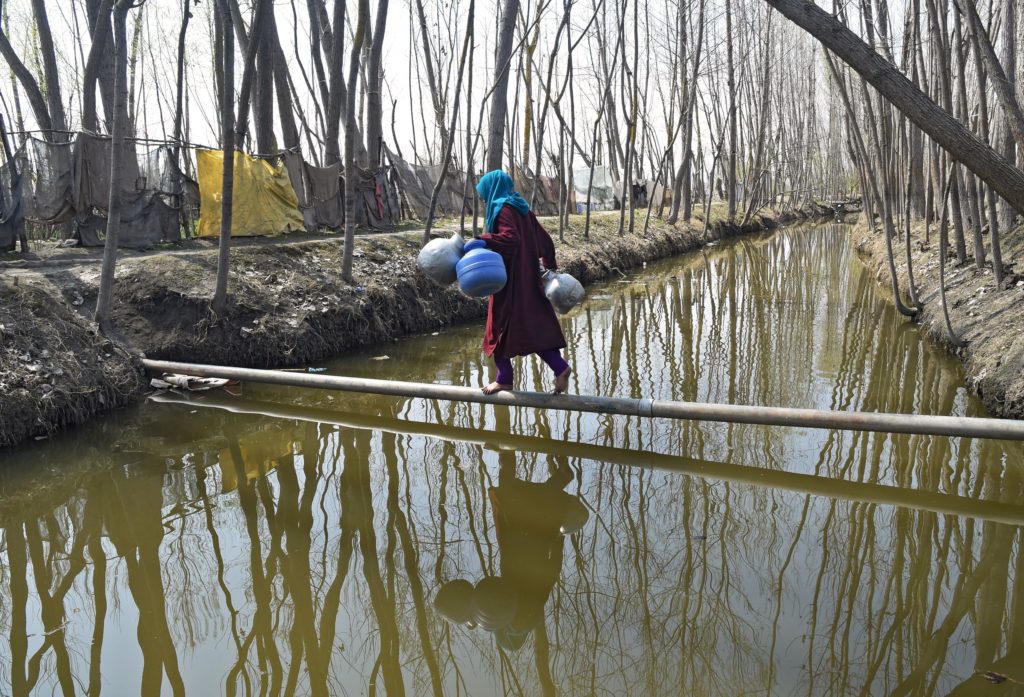
Physical Injuries and Assaults
Women are also at risk of harm because of dangers associated with their water-gathering responsibilities. It is not uncommon for women to injure themselves carrying heavy water vessels over uneven terrain. Women also face harassment, kidnappings, and sexual assaults on their journeys to and from water sources.
During the dry season, women may begin their collection journey at abnormal hours because of long lines at water sources. A woman from Dr. Young’s study of western Kenya explained that she wakes at 3 a.m. and loses sleep worrying about water for the next day.
Women also often experience domestic violence if they are unable to fulfill their household obligations. According to Dr. Young’s study, “[a]lmost half of the women interviewed experienced intimate partner violence (e.g., verbal or physical abuse) as a result of insufficient water.”
Educational Setbacks
Being the primary water collector for their families means women in water-insecure regions often do not have time to freely pursue an education.
One of the main ways water insecurity impacts women’s education access is through opportunity cost. They give up tasks such as schoolwork as a trade-off for spending time collecting water, which can lead to a vicious cycle of poverty and vulnerability.
World Bank research from Africa shows that, “a halving of water fetching time increases girls’ school attendance by 2.4 percentage points on average, with stronger impacts in rural communities.”
Water insecurity poses serious risks for individual women and their communities. But taken in aggregate, these issues can be a driver of global gender inequality and contribute to alarming global trends.
Local Crises, Global Consequences
These individual consequences women confront in their communities cause ripple effects on an international level and are augmented by climate change. Already, over a billion people worldwide live with the challenges brought on by worsening environmental conditions. Focusing international efforts on the most vulnerable will be a key piece of any global response.
Shocks such as drought, unexpected loss of livestock, and failed harvests can all be linked to climate change. The 2016 ODI Insight report on gender, agriculture, and water security found that these shocks hurt poorer populations more because it is harder for them to bounce back. Climate variability and the hazards that come with it have the potential to deepen inequalities among marginalized women in rural developments.
Dr. Young stated that water security is closely connected to economic productivity and argued that highlighting these links will be critical to promoting action.
“Once we can say there’s this much water security and it’s causing this many deaths or this many days of work missed, or this much economic loss, that’s when I think people will really pay attention,” Young said.
Similarly, the effects of gender inequality touch everything from economic productivity to international security in ways that are often not recognized by policymakers. In 2017, American foreign policy leaders were surveyed about gender inequality and national security. Only 13 percent believed that international gender inequality threatened economic growth.
But there is a robust case to be made for this connection. The World Bank has identified over 155 countries in the world where women face legal obstacles to their economic success. The overall loss in human capital due to the lack of education for women is estimated to be between $15-30 trillion globally, as reported by the Global Partnership for Education.
Some experts have tried to highlight the potential global benefits of tackling gender inequality worldwide, suggesting that these efforts could lead to higher global GDP, less radicalization among marginalized communities, and more successful peace negotiations.
This kind of broad progress will require countless individual efforts. Initiatives aimed at tackling women’s water insecurity can play an important part. But existing programs have a great deal of room to improve.
Aid and Gender
Many aid organizations do not receive enough funding and support from their respective governments to conduct well-rounded research and make lasting changes. Welsh said this means they lack extensive, updated data across regions, which would show who their efforts are not reaching.
“If we invest in better information, it’s going to reveal gaps to us,” Welsh said. “It’s going to reveal to us that we’re not doing as good of a job as we thought. Then we can say ‘we’re not doing a great job in these areas or among these people; let’s design interventions to target these people and these places.’”
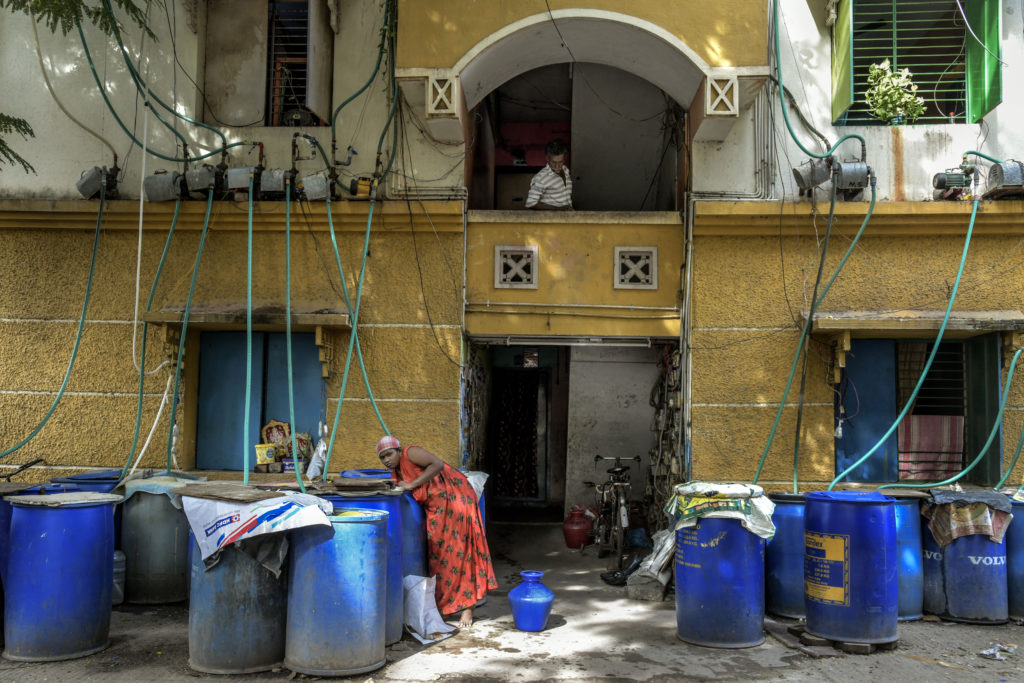
Aside from aid organizations getting better data, all levels of government implementing intersectional policies will help populations create more water-secure and climate-resilient economies. This requires better plans for water resource distribution, efforts to increase water efficiency, and investment in infrastructure to stabilize water availability.
With sufficient resources, aid organizations will be able to advocate for safe water and sanitation, direct more media attention to those in need, and encourage sustainable community participation in water resource management, which would increase the resilience of the water-insecure world.
According to information from the UN-Water and the Interagency Network on Women and Gender Equality, “local governments could help by promoting hygiene education through support groups and schooling, removing internal gender biases in public organizations, lobbying for better services for women and children and supporting equality for women in the decision-making process at local levels.” Actions such as these could significantly reduce the scope of the problem.
Changing Course
In order to fix these problems, the world as a whole must acknowledge the cause of the phenomena happening in water-insecure regions—climate change. While countries that are not experiencing water insecurity on a large scale—such as the United States—have been slow to get involved, there is still time to mitigate the worst consequences.
Instead of retracting from climate change and related issues, we should be leading the world in trying to address not just its causes, but its effects.
– Rod Schoonover
Rob Schoonover, the founder and CEO of the Ecological Futures Group, emphasized that nations such as the United States should intervene in the climate emergency.
“Instead of retracting from climate change and related issues, we should be leading the world in trying to address not just its causes, but its effects,” Schoonover said.
On an individual level, addressing the effects of climate change might mean ensuring that women like Mrs. B have easier and safer ways to meet their daily water needs. However, if taken to scale, these efforts will help to build the resiliency and prosperity of women and the societies they live in.
